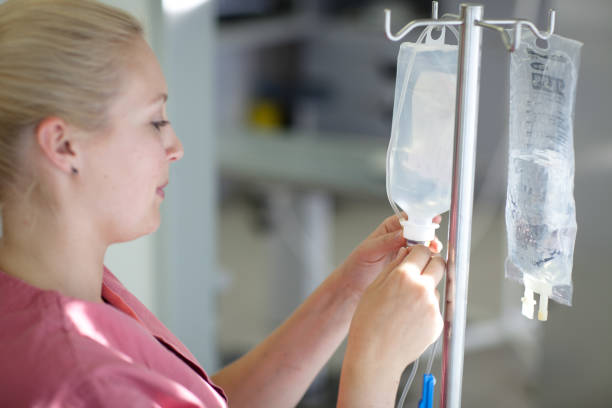In order for the life saving fluids to reach the circulatory system of the patient, administration of substances is done intravenously.
In order to ensure that the patient does not suffer from infection caused by the fluid administered, it is necessary to ensure that the fluid is sterile before being administered to the patient. The lifesaving to be administered to the patient through the intravenous system mostly come in a package through the can be merged with sterile water for them to create solution specific. Different forms of these fluids can be administered via intravenous way with tubing as well as IV fluid bags that are warm. Intravenous therapy is used when the total volume of the patient has significantly decreased.
Reduced volume by the ailing individual is caused by a number of different factors. The factors leading to reduced volume are diarrhoea, blood loss, vomiting, dehydration, trauma scenarios, electrolytes levels imbalances as well as surgery procedures.
Intravenous therapy can be administered in many situations such as prevention of dehydration, medication supply, blood transfusion completion as well as any other required purpose.
Use of a system to warm the substance being administered through the intravenous therapy is important to prevent extreme dropping of the patient body temperatures. If the fluids are intravenously administered in the patients body in a very short period, the patient is likely to suffer extreme drop in the body temperatures which is harmful. The modern intravenous models are portable thereby making it possible for the heating process to be done easily and quickly to save patient life.
When substances require to be administered in the body veins directly, then the intravenous therapy is commonly used by using IV fluid that is warm, tubing, a drip chamber as well as an accessing device.
The drip chamber is necessary to prevent them from entering the bloodstream and it also controls the rate of fluid being administered in the patient body. By use of intravenous entry, there are many substances that can be administered. These substances include saline solutions, medications, volume expanders, blood products, buffer solutions as well as blood substitutes.
To enter into the patient bloodstream, the substances are channeled to enter the access device which includes peripheral cannula, needles or the central lines for IV lines. The administration of substance intravenously can be stopped by the use of a long sterile tube and then attach a clamp to the IV setup. For individual requiring administration of larger amounts of fluids, infusers that are rapid are used.
